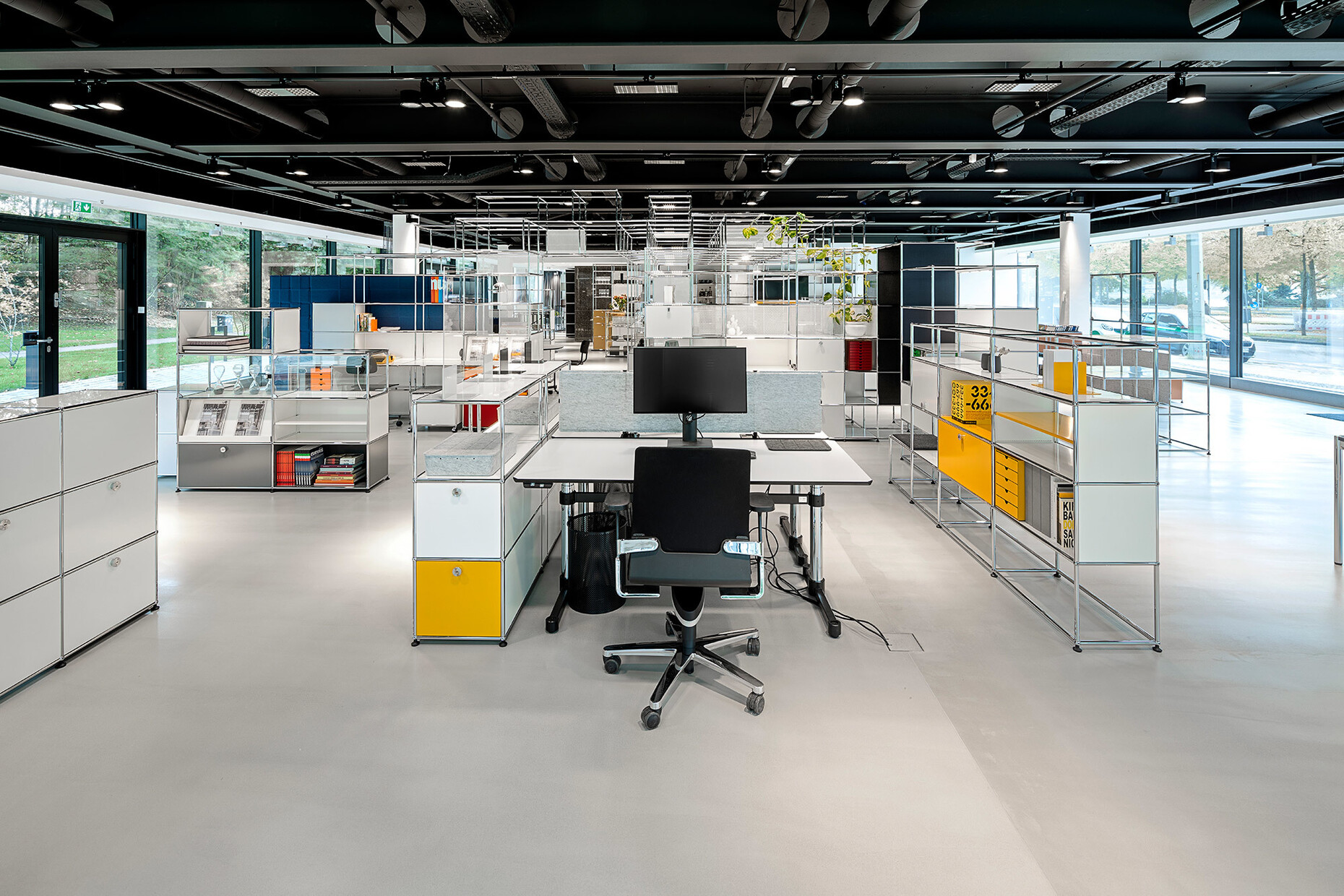Connecting things
When, at the beginning of the 1960s, American architect Louis Kahn designed the Salk Institute for Biological Studies in La Jolla, California, he planned, among other things, for loggias connecting the research labs with individual workrooms. These loggias were to serve as areas where the research scientists working there could take a break and were this destined to encourage a creative interaction through informal contact with other colleagues. In our present-day work environments that merge life and work, such transitional zones are more important than ever before. It therefore comes as no surprise that in recent years Swiss furniture manufacturer USM has become increasingly interested in this. In order to find out how their own products would cope with the requirements of the new work environment they sat down with, among others, Ben Van Berkel and the UNStudio Futures team.
The subject is also reflected in the new showroom in Hamburg that opened at the end of October in premises in the Finnlandhaus building on Esplanade 41. The location could not have been a more suitable choice since the latter building designed by PP Hentrich-Petschnigg & Partner KG is a mere three years younger than the furniture-building system “USM Haller” designed in 1963. At Finnlandhaus across exhibition space totaling 368 m² USM is presenting, a large range of areas in which living and working merge in one spatial network. The “USM Haller-System” allows for a fluid transition between storage space, work zone and spatial niches for social interaction. Within the overall structure, the individual office shelves can be transformed in the twinkling of an eye into benches, wardrobes, reception desks, office desks or cabinets for personal effects. The adaptable system with its wide range of accessories such as the “USM Inos box set” and the “USM Haller E” with matching office furniture such as the “USM Haller Table”, the “USM Kitos” and the “USM privacy panels”, offers many forms of interaction.
To accompany the exhibits there is an installation by Berlin-based artists’ collective TapeThat, which is well known for its artworks made of adhesive tape with which it decorates not only public spaces, but also clubs, empty buildings and galleries. The artists’ brightly-colored tape running diagonally across the Hamburg showroom’s glass façade forms a cheerful contrast to the postwar Modernism of the Finnlandhaus. In the interior, the tape artwork then merges with the furniture on show to create a ringlike composition which, depending on the angle from which it is viewed, appears as either a single entity or the sum of all its parts, thus once again taking up the idea of bringing things together. (ar)



































